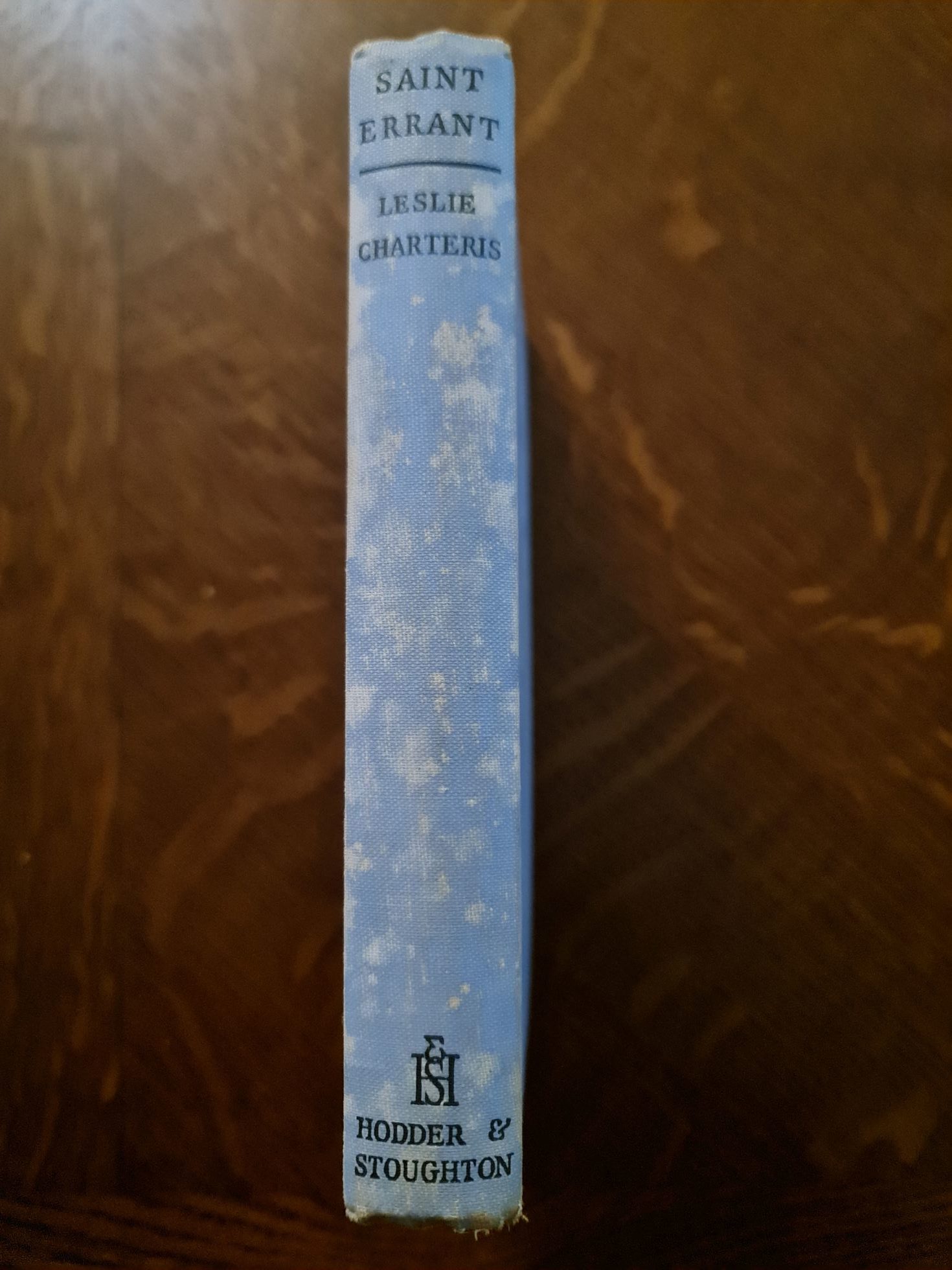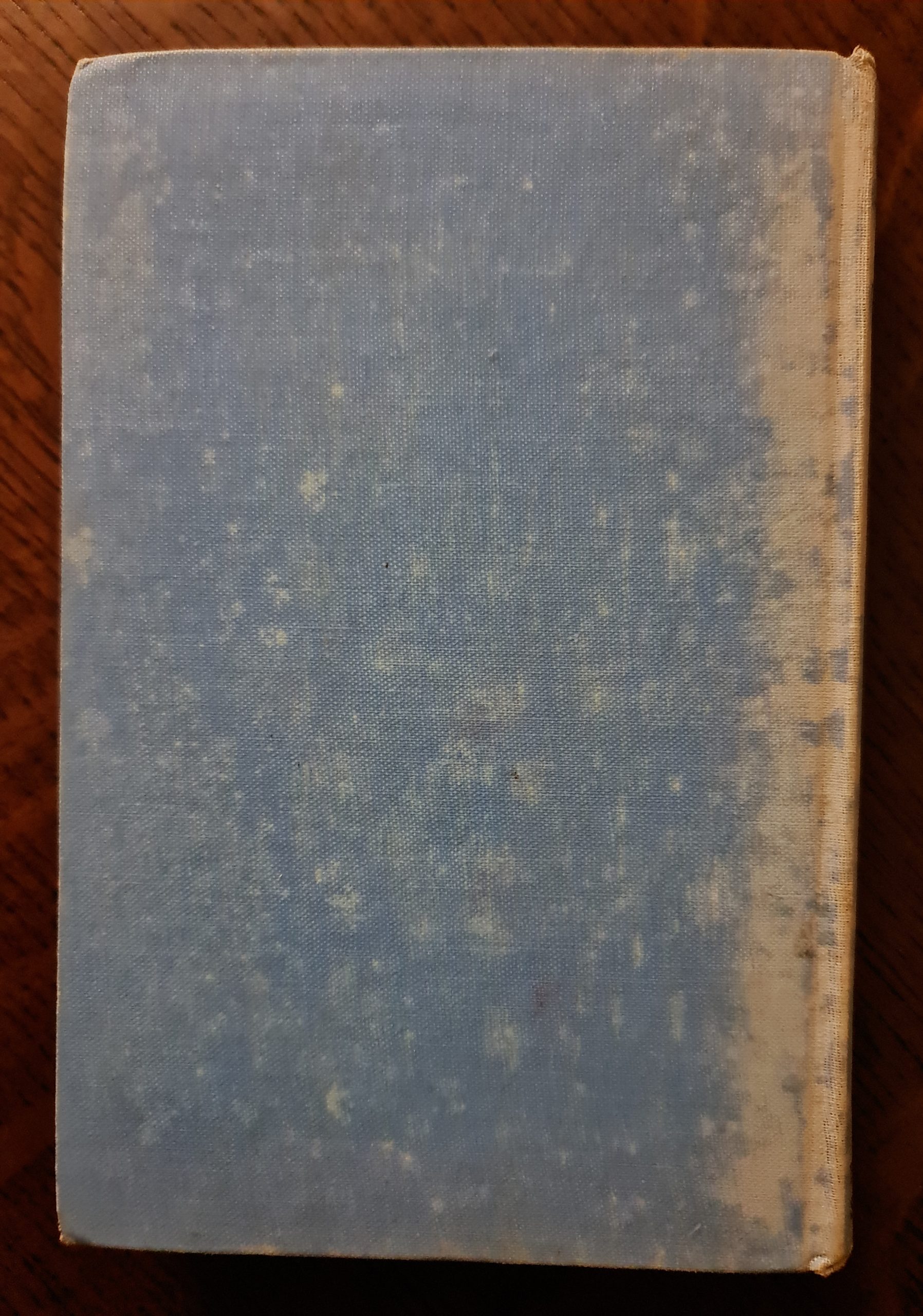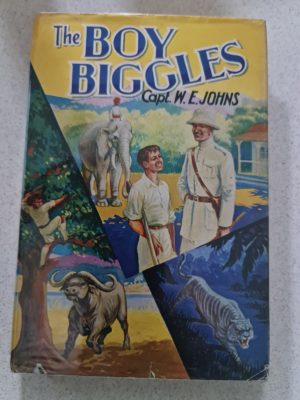Leslie Charteris – Saint Errant (1949)
This edition of Saint Errant, was published by Hodder & Stoughton in 1949 and is an English FIRST EDITION.
This edition is in very good condition for a 74-year-old book. The spine is in good condition except for age discolouration, as are the front and back covers. The gutter throughout is in excellent condition, with no parting whatsoever. The front and back inside covers are in good condition except for slight age discolouration, as is the page opposite. All pages are in good condition except for some slight age discolouration. Further photographs can be provided upon requested.
Please note, all photographs are high-resolution and therefore, magnify all blemishes.
$98.00
+ Free ShippingDescription
This edition of Saint Errant, was published by Hodder & Stoughton in 1949 and is an English FIRST EDITION.
This edition is in very good condition for a 74-year-old book. The spine is in good condition except for age discolouration, as are the front and back covers. The gutter throughout is in excellent condition, with no parting whatsoever. The front and back inside covers are in good condition except for slight age discolouration, as is the page opposite. All pages are in good condition except for some slight age discolouration. Further photographs can be provided upon requested.
Please note, all photographs are high-resolution and therefore, magnify all blemishes.
If you require any further details of this book contact Books4U.
Preface
Saint Errant is a collection of short stories by Leslie Charteris, first published in 1948 by The Crime Club in the United States and in 1949 by Hodder and Stoughton in the United Kingdom. This was the 28th book to feature the adventures of Simon Templar, ‘Alias The Saint’, and the first Saint short story collection since 1939’s, ‘The Happy Highwayman’. Several of the stories were based upon the then-current Saint comic strip, whilst the story ‘Judith’ was first published in 1934 (the version featured in this book has been revised and updated, as have several other stories which were originally published in the 1930s).
‘Saint Errant’ was the first of several themed story collections which Charteris would publish over the next decade, the author having decided following ‘Call for the Saint’ to focus on the short story format for Templar’s adventures, rather than novels and novellas. In the case of ‘Saint Errant’, each story focuses on a different female acquaintance of Templar’s.
This was the final book to feature Templar’s long time love interest and partner, Patricia Holm, a recurring character dating back to the first Saint novel, but who had only made a few story appearances over the preceding decade. Charteris decided that Templar should no longer be tied down to just one woman (although he had enjoyed romantic dalliances in several previous books, such as ‘The Saint Sees it Through’, suggesting his relationship with Holm was non-exclusive). Later, continuation writers would not bring Holm back to the series (due primarily to most later books being adaptations of the 1960s TV series, in which she did not appear), although Charteris did attempt to get the novel ‘The Saint’s Lady’ (1979) published, and Holm appears in that work. There is also a brief reference to Holm in the final book of the series, ‘Salvage for the Saint’ (1983), in which it is indicated that Holm left the relationship with Templar some time previously. In ‘Saint Errant’, Holm appears in the stories “Iris”, “Lida” and “Luella,” before making her exit from the series.
Most of the stories fall in the mystery/crime genre, except the closing story, ‘Dawn’, which incorporates supernatural elements. ‘Dawn’ also breaks the fourth wall by having Templar reference Charteris and his stories in dialogue.
The Saint book series went on hiatus after this release; the next Simon Templar story collection would not appear until 1953, although the character continued to appear in radio plays and comic strips during the interval. All further Saint books used the short story format until ‘Vendetta for the Saint’ was published in 1963.
Some later reprint editions of the book, such as the 1981 reissue by Ace Charter, modify the title to read ,’The Saint Errant’.
https://en.wikipedia.org/wiki/Saint_Errant
Series Preface
Simon Templar is a British fictional character known as The Saint featured in a long-running series of books by Leslie Charteris published between 1928 and 1963. After that date, other authors collaborated with Charteris on books until 1983; two additional works produced without Charteris’ participation were published in 1997. The character has also been portrayed in motion pictures, radio dramas, comic strips, comic books and three television series.
Simon Templar is a Robin Hood-like figure known as the Saint – from his initials. Templar has aliases, often using the initials S.T. such as ‘Sebastian Tombs’ or ‘Sugarman Treacle’. Blessed with boyish humour, he makes humorous and off-putting remarks and leaves a ‘calling card’ at his ‘crimes’, a stick figure of a man with a halo over his head. This is used as the logo of the books, the films, and the three TV series. He is described as “a buccaneer in the suits of Savile Row, amused, cool, debonair, with hell-for-leather blue eyes and a saintly smile”.
His origin remains a mystery; he is explicitly British, but in early books, there are references which suggest that he had spent some time in the United States battling Prohibition villains. Presumably, his acquaintance with Bronx sidekick Hoppy Uniatz dates from this period. In the books, his income is derived from the pockets of the ‘ungodly’ (as he terms those who live by a lesser moral code than his own), whom he is given to ‘socking on the boko’. There are references to a ‘ten percent collection fee’ to cover expenses when he extracts large sums from victims, the remainder being returned to the owners, given to charity, shared among Templar’s colleagues, or some combination of those possibilities.
Templar’s targets include corrupt politicians, warmongers, and other low life. ‘He claims he’s a Robin Hood’, says one victim, ‘but to me he’s just a robber and a hood’. Robin Hood appears to be one inspiration for the character; Templar stories were often promoted as featuring ‘The Robin Hood of modern crime’, and this phrase to describe Templar appears in several stories. A term used by Templar to describe his acquisitions is ‘boodle’, a term also applied to the short story collection.
The Saint has a dark side, as he is willing to ruin the lives of the ‘ungodly’, and even kill them, if he feels that more innocent lives can be saved. In the early books, Templar refers to this as murder, although he considers his actions justified and righteous, a view usually shared by partners and colleagues. Several adventures centre on his intention to kill. (For example, ‘Arizona’ in ‘The Saint Goes West’ has Templar planning to kill a Nazi scientist.)
https://en.wikipedia.org/wiki/The_Saint_(Simon_Templar)

















Reviews
There are no reviews yet.